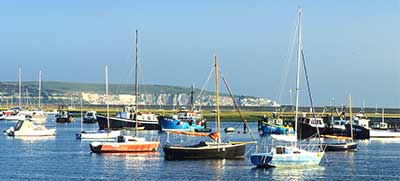Hurst Castle and the Spit
Hurst Castle is situated towards the seaward end of Hurst Spit, a 3 kilometres (2 miles) long, sand and shingle spit curving gracefully out into the Solent, extending from Milford On Sea to within 1.25 kilometres (¾ of a mile) of the Isle of Wight.
(1) Construction and the early years
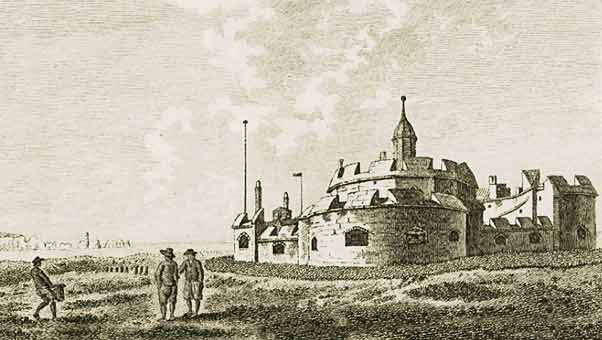
The castle was originally built to defend the western approach to the Solent and was completed in 1544 as part of a chain of coastal fortresses constructed during the reign of Henry VIII to counter possible invasion following the beginning of the English Reformation, a period during which England broke away from the authority of the Pope and the Roman Catholic Church.
High on the list of potential aggressors was staunchly Catholic France, motivated by a desire to right what was considered to be a religious wrong by re-establishing the Pope's authority, and also by territorial ambitions. Indeed, encouraged by the Pope, invasion at this time by the French seemed inevitable.
Henry was well aware of the threat and acted quickly, commissioning many new coastal fortifications. Those intended to defend the approaches to the Solent and Southampton Water included Hurst Castle, at the time, one of the most advanced artillery fortresses in England; Calshot Castle, a little to the east along the coast from Hurst; and fortifications at Netley and St Andrew's, on the Hamble River. Newly constructed blockhouses at East and West Cowes, and the castle at Yarmouth, all on the Isle of Wight, at least in part, served the same purpose.
Conveniently available stone and lead from Beaulieu Abbey - largely demolished following the Dissolution of the Monasteries (1536 - 1541), which allowed Henry and his favourites to seize control of many religious houses - were probably used in the construction of the castle.
(The builders of Calshot Castle similarly used materials from Beaulieu and Netley Abbeys, whilst at Yarmouth Castle, masonry from Quarr Abbey, near Ryde, was used).
The exact form of the original castle is not known, but it was certainly far smaller than the structure seen today. It may have been as it appears on the earliest prints and plans that show a twelve-sided central tower, a surrounding thick, shallow 'V'-shaped curtain wall into which were inserted three semi-circular bastions - projections from which can be defended the ground in front of the curtain walls.
The discovery of a dated stone and masons' marks has, however, suggested that the tower may have been built, or at least substantially modified, in the mid-1580s.
(2) Later alterations
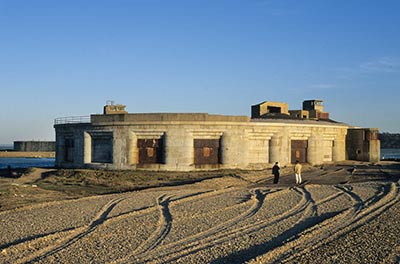
The castle was strengthened and extended at various times, particularly during the 19th century when attacks by the French were feared, culminating in a major reconstruction during the 1860s and early 1870s - construction of the two huge wings either side of the much modified Tudor fort began in 1861 and was completed in 1870, ready for fitting out internally to accommodate the garrison and guns.
And then later in the 19th century, by the 1880s, when the French navy was being equipped with newly developed, fast torpedo boats that could not easily be countered by existing guns on warships, 'quick firing' weapons were developed and initially installed on the warships and later within coastal forts such as Hurst Castle where they replaced older, 'slower to load and fire' weapons.
Latterly, Hurst Castle also saw service, albeit limited, during the First World War and again during World War Two when, for example, new gun positions were established and a look-out tower built. The garrison remained in place until 1956 whereupon the castle was scheduled as an ancient monument open to the public.
(3) A prison, lighthouses and a township on the Spit
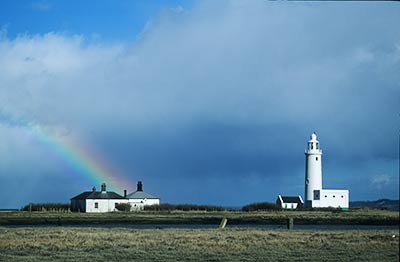
In 1648, during the English Civil War, Charles I was famously imprisoned here before being taken to London for trial and eventual execution. Hurst Castle was, though, also the abode of another less well known prisoner, Father Paul Atkinson, who was harshly sentenced to perpetual imprisonment in 1700 for 'popery', for celebrating mass and / or carrying out other priestly functions that encouraged the spread and growth of Catholicism. Father Atkinson remained at Hurst until his death in 1729.
Over the years, a number of lighthouses have been constructed to warn sailors of the perils associated with Hurst Spit and the racing tide between the Spit and the Isle of Wight, the first dating back to 1786 through to the High Light of 1867 which continues to function to this day.
But perhaps most surprisingly, certainly to modern day visitors, settlements outside the castle walls developed over the years to serve the garrison, smugglers, excise men, salt makers, lighthouse keepers and others brave enough to face the often harsh elements at the end of the Spit. Today, though, little remains to remind of this once vigorous community.
(4) Visiting the castle
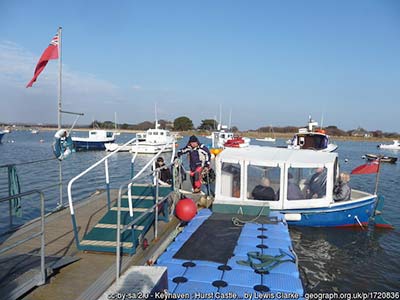
Hurst Castle is usually open daily from April to October, and at weekends from November to March. Full details of admission charges and opening times are available from Hurst Marine, a local family business that has been associated with the castle for more than three generations and that now provides day-to-day management of the castle on behalf of English Heritage.
In addition to a cafe, the castle features a number of displays and exhibitions including a World War Two theatre and guns, and a lighthouse exhibition managed by the Association of Lighthouse Keepers. Two of the huge 38-ton guns installed in the 1870's can be viewed in their casemates, and an audio guide is available.
The castle can be reached by walking along the shingle spit or, usually from the end of March until the end of October, by taking a ferry from Keyhaven harbour - check here for the latest up-to-date ferry information.
References:
Hurst Castle - An Illustrated History: Jude James
Quick links
More links
Search this site

